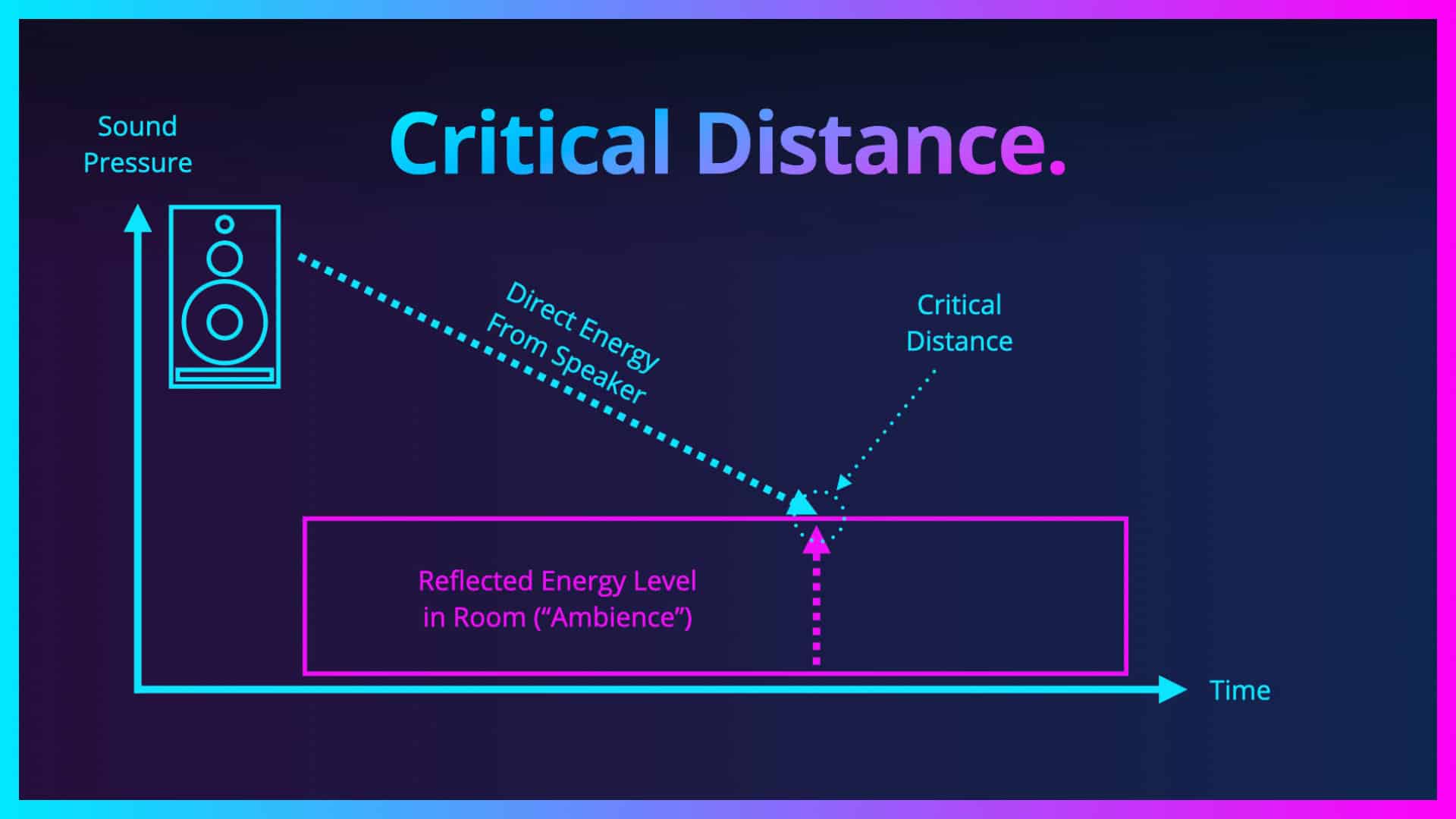What does “critical distance” mean? Why is it useful? How might it impact your decisions on your music studio setup and room orientation?
✅ Get the Free Acoustics Course ➤ https://warpacademy.com/course/music-studio-acoustics-online-course/
✅ Try Warp Academy for Free ➤ https://warpacademy.com/free-stuff-bundle
This video and many more like it are part of our free Music Studio Design & Acoustics Course at Warp Academy.
What does “critical distance” mean? Why is it useful? How might it impact your decisions on your music studio setup and room orientation?
When you’re listening to speakers in a room you have the direct sound energy from the speaker and you have the reflected energy in the room. The direct sound reaches you first, and the reflected energy or “room ambience” arrives sometime later from various angles and with different delays.
Many people call this reverb or reverberation, but in most listening rooms and music studios, this is not actually reverberation. This is simply the decay of frequencies in the room, which is typically quite short in acoustically treated rooms (0.1 – 0.7 seconds depending on frequency) and a bit longer in non-treated rooms (0.3 – 1.5 seconds).
The critical distance is the point at which the direct sound from your monitor speaker is equal to the reflected energy. Another way to think of this is that your room sound is balanced 50/50 with your dry sound from the speaker.
By moving closer to or further away from the speakers, along the center line of the room, you can adjust the proportion of direct to reflected energy that you hear at the listening position. Neat hey?
How might you use this? If you’re listening for general enjoyment, you may want to be at or further than the critical distance to get a sense of envelopment and depth to the sound stage. Reflected energy tends to create a lush and wide sound. If you’re critically listening to music and trying to make engineering decisions, you may want to be at or closer than the critical distance to hear a more accurate sound that’s less coloured by the room acoustics and decay characteristics.
In my Studio B, I prefer to be far inside the critical distance – working on ultra near field monitors – because I prefer to hear more of the direct sound and less of the “room sound” due to the non-ideal frequency response and decay profile of my room.



